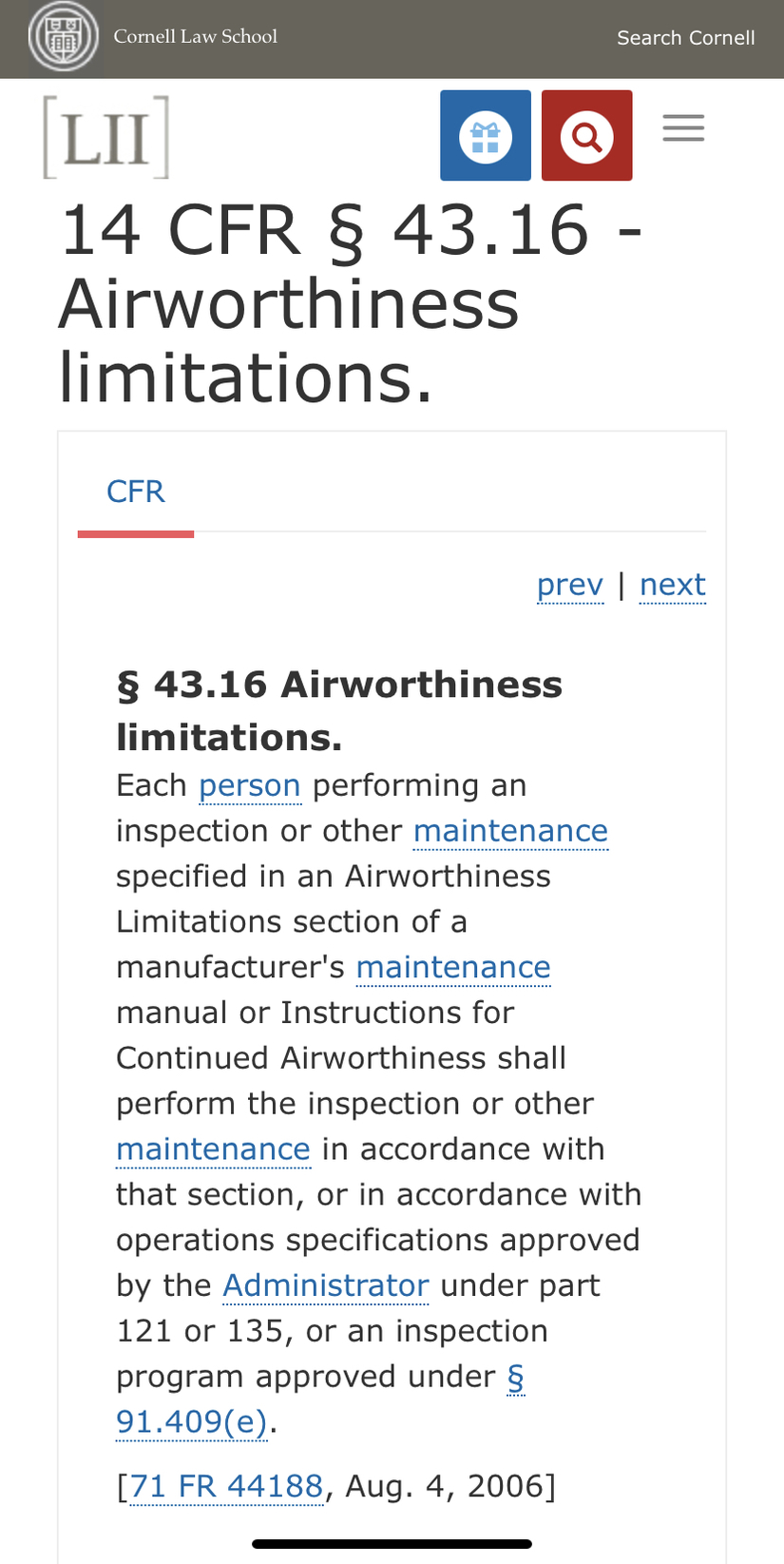Part-ML includes the recommendation for a risk based approach.
Can you be blamed or guilty? Impossible to answer, as only a court will reveal it in the worst case.
PetitCessnaVoyageur wrote:
In general, if choosing to deviate from MM, is there a means / necessity of justifying the choice for having done so ?
The regulations (FARs) under which American aircraft were certified make specific reference to the Airworthiness Limitations Section of the MM, not the whole thing. It Is otherwise intended to be guidance for the A&P mechanic.

The FAA as certifying authority for these aircraft does not intend that the entirely of the manufacturers MM be some kind of mandated bible for the aircraft owner. The FAA approved MM airworthiness limitations section (only) plus any ICAs are mandated only in the form in which they may (or may not) have existed at the original date of FAA certification. Any subsequent changes come via ADs issued by FAA directly to aircraft owners – the manufacturer’s role under FAA certification does not include authority over the fleet they once manufactured, or its owners.
Also note that older US certified types do not have an Airworthiness Limitations Section in their MM or approved ICAs either. In these widespread cases that means the entire MM is intended by the certifying authority (FAA) to be guidance for the A&P mechanic, who generally maintains a private aircraft based on condition plus ADs, with the intended airworthiness inspection and sign offs being performed as per FAA regulations, both in terms of procedures and authorized personnel, not by commercial company documents. A typical example of those FAA airworthiness regulations is the very simple Annual Inspection requirement, as listed here Naturally, that does not preclude the mechanic from using the MM, but he is not bound to it. The same should therefore logically apply to foreign registered aircraft subject to a documented ‘maintenance plan’ requirement by their state of registration.
For clarity, and for context on how airframe manufacturers try to publish and manipulate their way around this legal limitation on their power over individual owners, this is a pretty good read, and presents the situation as it should be viewed.
Just to report that after meeting the regulator, I took the decision to leave CAMO and be sole responsible for airworthiness.
During our extensive discussion, we talked about liability. OSAC only says what EASA says. In case of an accident, it would be closely checked that all has been done within the rules.
What if I chose to extend a propeller life above manufacturer TBO recommendation ? It’s impossible to know how it would impact liability attribution.
By the way I thank you all for your help. @Snoopy, @Airborne_Again and @mh have brought excellent light to how regulation works.
For information, all the people who rent the aircraft, including people professionally involved in aviation, have expressed their confidence. Their point of view is that it won’t alter flight safety. It will just give me some more work.
PetitCessnaVoyageur wrote:
What if I chose to extend a propeller life above manufacturer TBO recommendation ? It’s impossible to know how it would impact liability attribution.
Why not start with aircraft engine/prop combination in accident/incident reports and gather TTE/TTP data first  ?
?
I don’t see the issue with exceeding TBO as long as the engine flies regularly Xh/year (X>100 with no more than 1month gap) in good hands who flies it following SOP/POH and you have good engine monitor data and oil analysis to show that
If engine is doing 20h/year, flown LOP by F1 drivers between June & July, I would be more scared if it’s above TBO, even more scared if it’s bellow TBO !